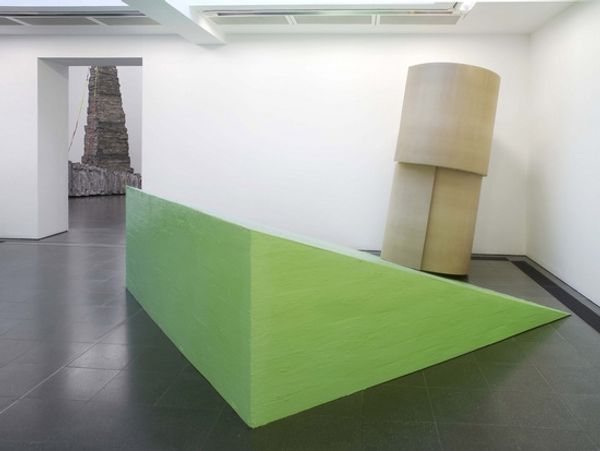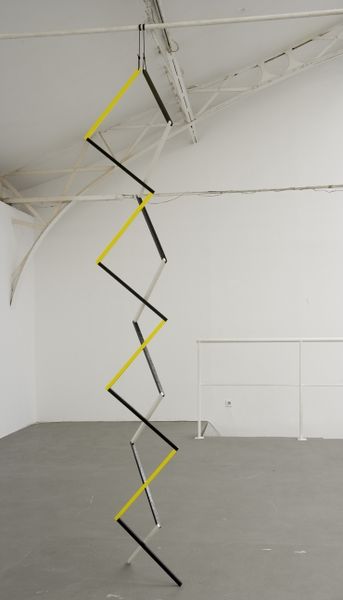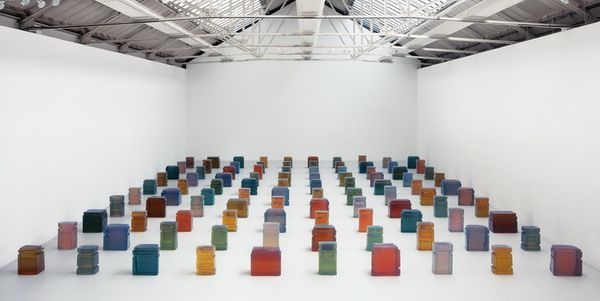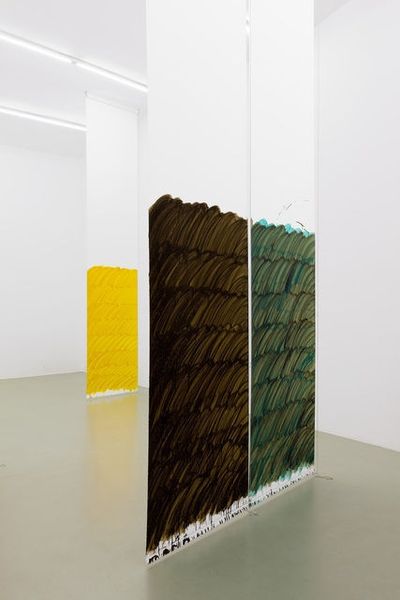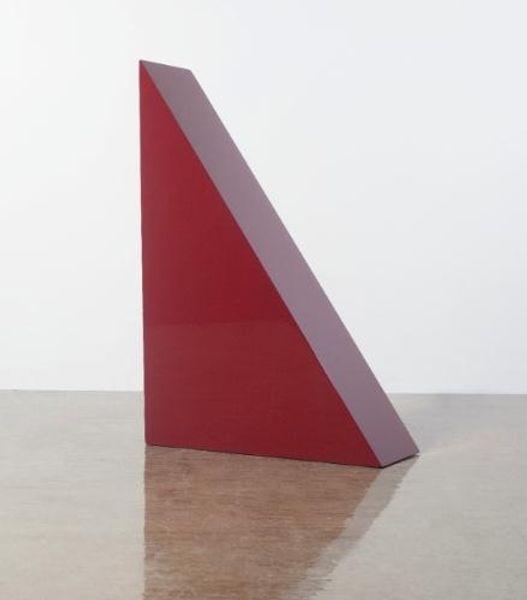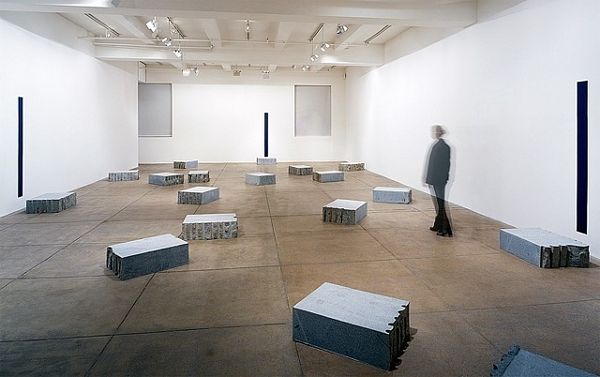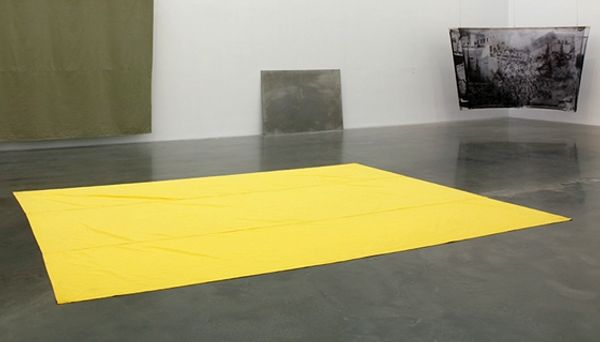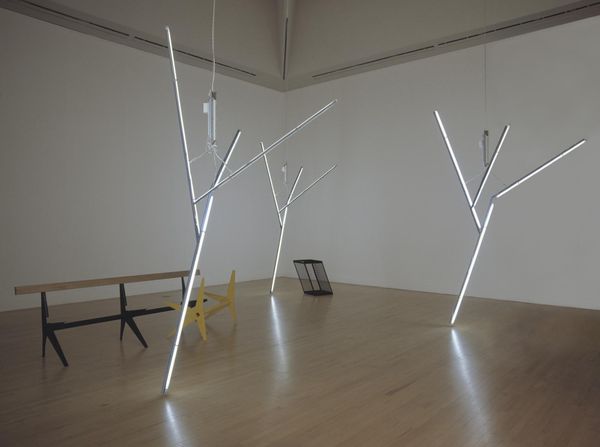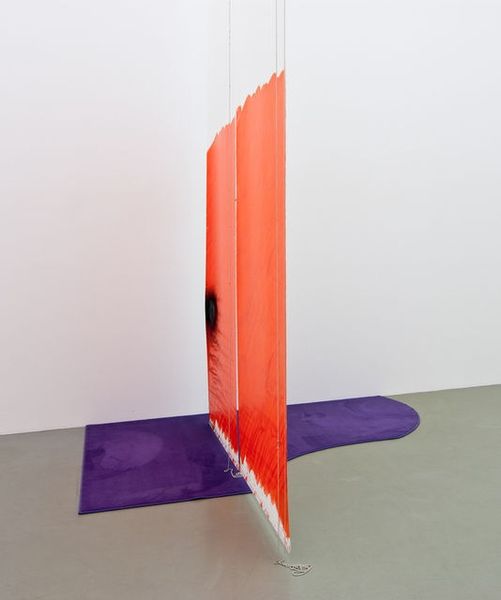
metal, sculpture
#
abstract-expressionism
#
minimalism
#
metal
#
form
#
geometric
#
sculpture
#
modernism
Copyright: Phillip King,Fair Use
Curator: This is "Nile," created in 1967 by Phillip King. It’s crafted from painted metal, arranged directly on the floor. What are your initial thoughts? Editor: Stark and grounded. The sharp angles against the floor suggest both fragility and industrial strength, an intriguing juxtaposition. It gives off an immediate aura of tension, the shifting colors, perhaps signaling a change in the landscape it means to evoke. Curator: King was definitely playing with boundaries here, dissolving the line between sculpture and the space it occupies. Look closely at the method and consider how the arrangement itself becomes integral. The way it lies low demands a change in perspective. Editor: I'm struck by how the purple and red are arranged like figures enacting some ritual, perhaps a transformation of some kind. Are we meant to equate the violet with the water receding or changing over to a different hue representing fertile lands brought to life? Curator: Interesting take. King was working within the context of Minimalism, moving away from representational forms to explore pure color and shape. It reflects, really, the materials of industrial manufacture themselves rather than mirroring the world through it, as it transforms flat metal into sculptural narrative. The surface smoothness masks the labor of cutting, shaping, and joining to create a pristine appearance, very much of its time. Editor: But it still sparks questions. The Nile is one of civilization's greatest continuous life sources. Does the hard, flat industrial material suggest humanity's influence or damage imposed on this waterway, perhaps? Even in its abstract form, the symbolism of the river remains, the geometric progression alluding to something fundamental. Curator: Indeed, while embracing modernist aesthetics, King also invites associations. The deliberate placement and the choice of industrial material are key to understanding "Nile" as more than just an exercise in form, its physical reality reflecting the broader culture. Editor: Ultimately, King has me pondering how industrial production interacts with primordial life sources. I won't view the Nile in quite the same way again! Curator: Exactly. King challenges us to look beyond the surface, finding resonance and reflecting about how art recontextualizes materials from all spheres.
Comments
No comments
Be the first to comment and join the conversation on the ultimate creative platform.

